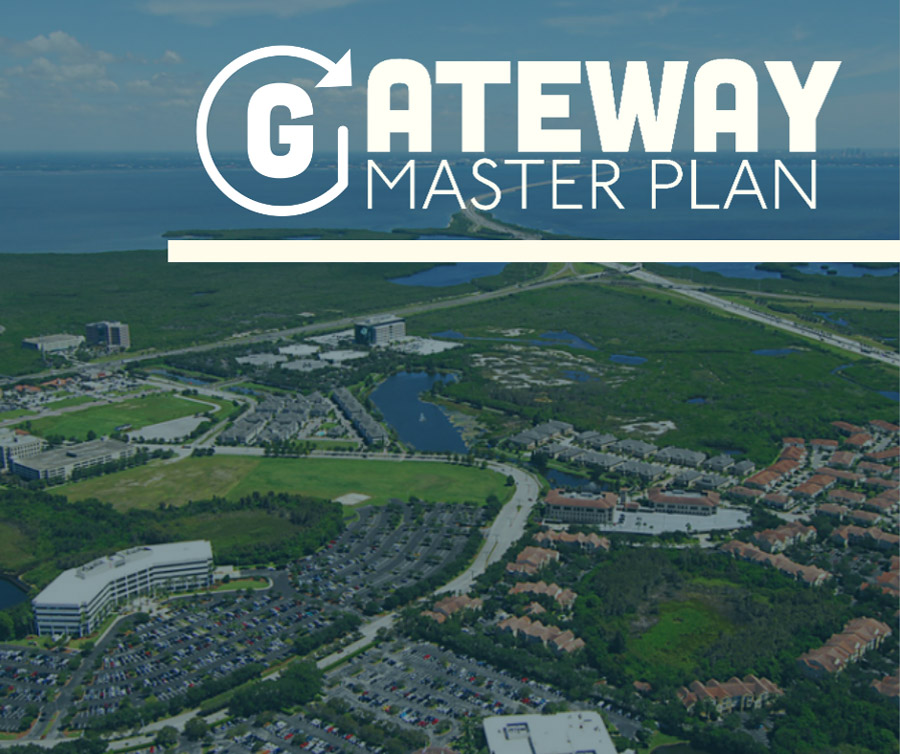In December 2015, the Board decided on three “Strategic Planning & Operations Topics” – SPOTlight Pinellas. These three SPOTlight emphasis areas – US 19, Beach Access, and the Gateway/Mid-County area – will be a focus of Forward Pinellas’s work efforts over the upcoming years. All three SPOTlight areas include strongly coordinated improvements in transportation and land use are needed to foster economic opportunity, enhance community sustainability and leverage partnerships with the public and private sector.
The goal for each SPOTlight area is to identify strategic short-term actions within the framework of a longer-term land use, redevelopment and transportation vision. All three work plans will include the following phases:
- Imagine – define the problem(s), convene partners, and develop a working vision.
- Explore & Discover – review data, trends and conditions to identify needs and strategies.
- Test – determine strategies that would be effective and supported by the community.
- Set the Course – confirm the vision, strategies and actions, and set performance targets.
- Convey Understanding – document actions, tell the story and evaluate effectiveness of the strategies and actions.
SPOTlight

Finding a reliable, comfortable, and safe means of transportation to and along the Gulf beaches
Understanding beach access starts with Pinellas County’s best-known natural asset, the 35-mile stretch of white sand beaches located along the barrier islands facing the Gulf of Mexico and separated from the mainland by the Intracoastal Waterway. There are 13 local governments along this shoreline, communities that have developed to serve permanent residents, businesses and tourists.
Beach access includes not only access points to the beach, but traveling to those access points and north-south travel along the beach corridor. This involves meeting the needs of those wishing to travel to and along the beach, and also the appropriate land uses that serve these communities.

Linking Jobs, homes and transit to protect opportunities for prosperity for all residents
When you hear the words “industrial land,” what do you think of? If the words conjure up images of smokestacks and noisy factories, think again. In Pinellas County, industrial land holds everything from financial service offices to software developers to research labs.
Forward Pinellas strives to protect opportunities for prosperity for all citizens. To do this, we must link jobs, homes and transit by doing three things:
- Set aside enough land for high-tech manufacturing, information technology, and other industries that provide high-paying jobs.
- Ensure people of all incomes in our community can afford quality housing close to where they work, creating more stability for both the workers and their employers, while helping the local economy and protecting the quality of life for everyone.
- Provide access to residents in every neighborhood so they can reach jobs and education through reliable public transit.

Envisioning a safe, unique, and accessible story for the corridor
US 19 is the backbone of Pinellas County, extending from Tarpon Springs and Pasco County in the north to St. Petersburg and beyond in the south. Major redevelopment efforts are taking place on or near US 19 in St. Petersburg, Largo, and Clearwater and it is within the Community Redevelopment Area (CRA) planning area for Lealman.
Moving forward, based on past efforts, evolving development patterns, changes in Pasco County, and direction from the Board, a vision for the US 19 Corridor needs to be developed. This vision will address the unique nature of the corridor and its role in Pinellas County, the economics around US 19, the role of transit, and desired outcomes to provide an overall story for the corridor.

Gateway Master Plan
The Gateway/Mid-County area is about 30 square miles. It is the primary economic engine of Pinellas County and the Tampa Bay region. The area includes four local government jurisdictions and is home to a large number of higher wage jobs and young professionals because of its accessibility to regional highways, downtown St. Petersburg and destinations in Tampa, yet it suffers from the challenges of a disparate, disconnected and disinvested automobile-centric development pattern.
A well thought-out plan for multimodal connectivity is needed. This will create an opportunity to preserve the investments made in the area’s regional highway network, take pressure off the surface roadways, and foster more efficient, compact development.

